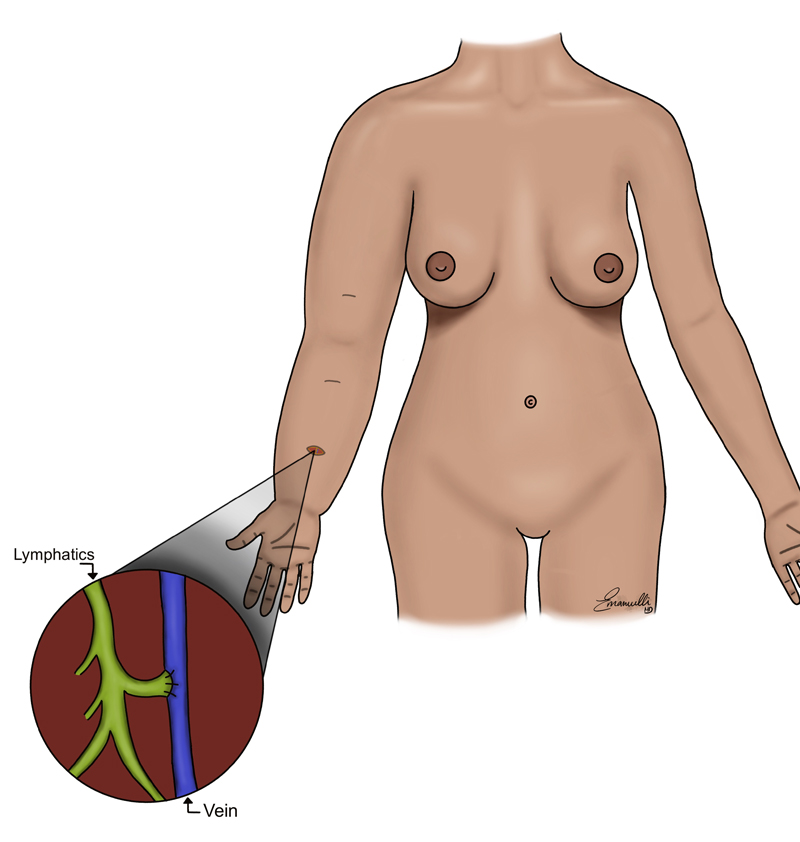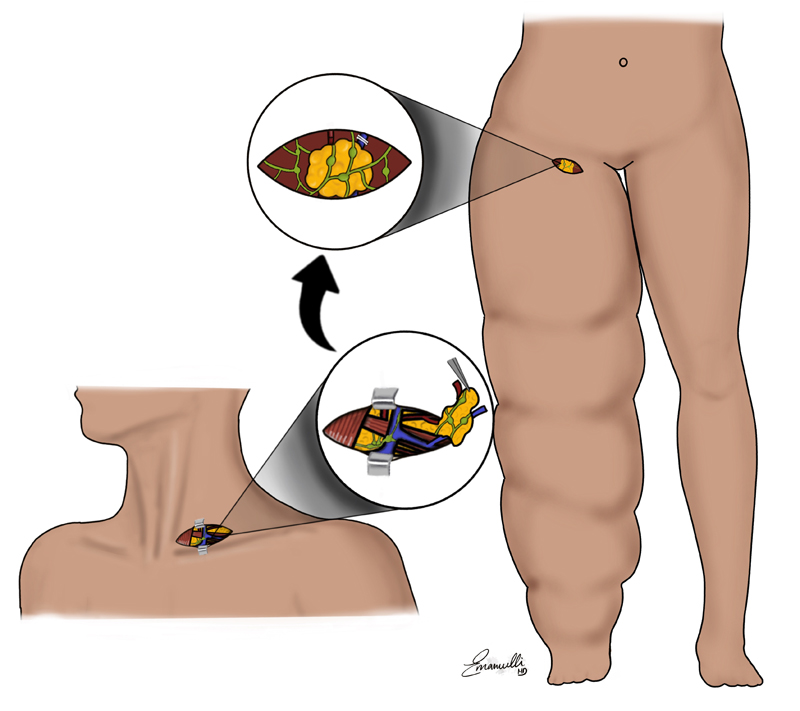Lymphedema

Lymphedema is persistent swelling of an extremity or other part of the body due to damage of the lymphatics which normally drain fluid from that region. We most commonly see this in cancer patients, specifically breast cancer patients, in the United States. There are many strategies to surgically treat lymphedema, but 2 main options that utilize microsurgery are lymphovenous anastomosis (LVA) and vascularized lymph node transfer (VLNT). LVA involves using the microscope and supermicrosurgical techniques to reroute your tiny, less than 1mm, lymphatic vessels from blockage due to scar to an open vein to drain freely. VLNT involves taking extra lymph nodes from a different part of your body and connecting them to a new blood supply in the area where you have lymphedema to help create a new drainage mechanism.

There also is a surgery being investigated to reduce the chances of developing lymphedema. It is called LYMPHA or immediate lymphatic reconstruction and is done at the same time as the cancer lymph node dissection. It involves connecting the cut lymphatics that drain the limb to a vein rather than clipping them. The idea is that the lymphatics stay open and continue to drain the limb rather than scar and potentially contribute to lymphedema in that limb.